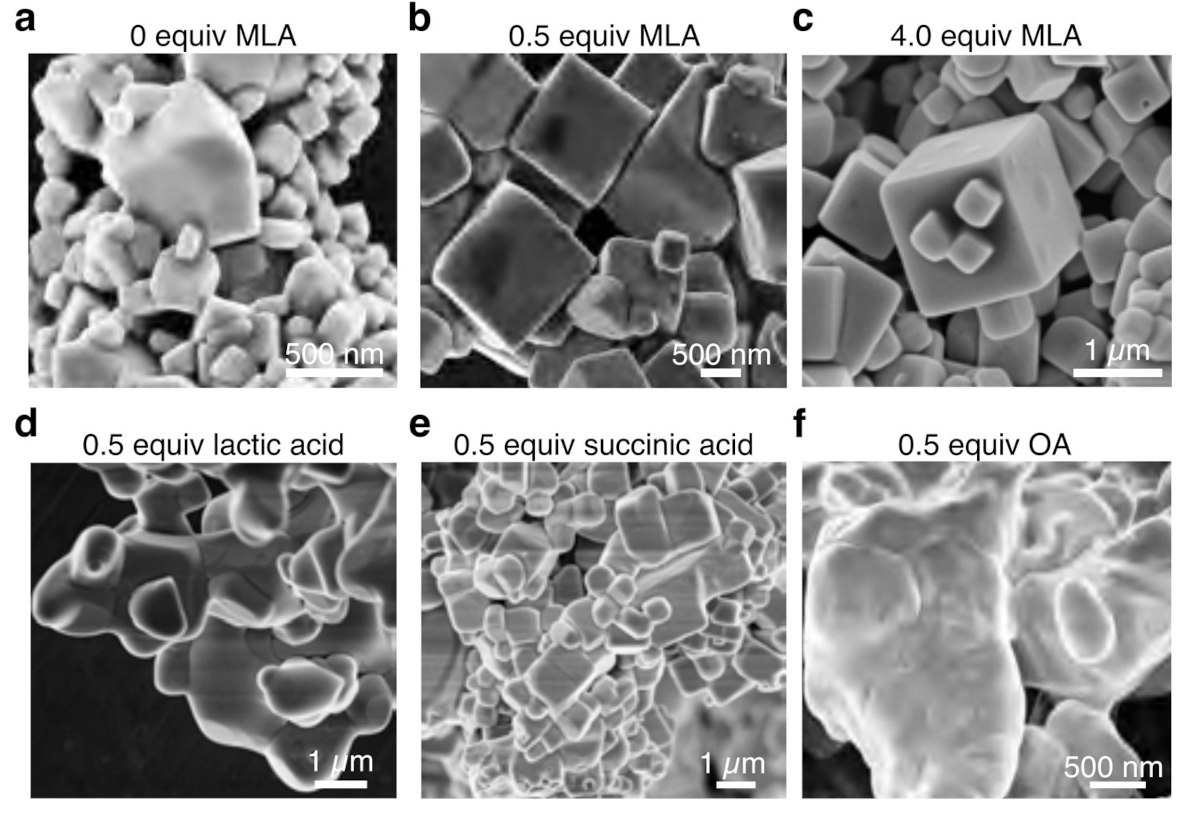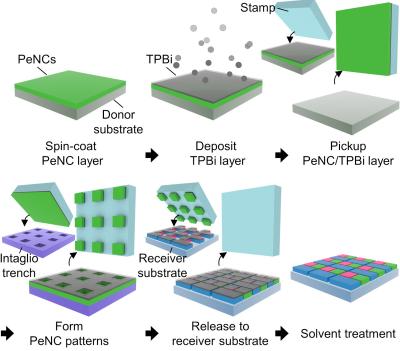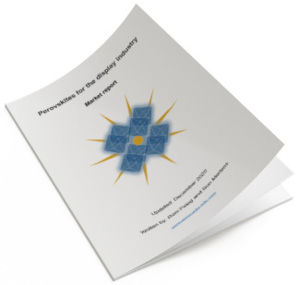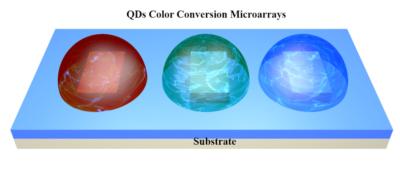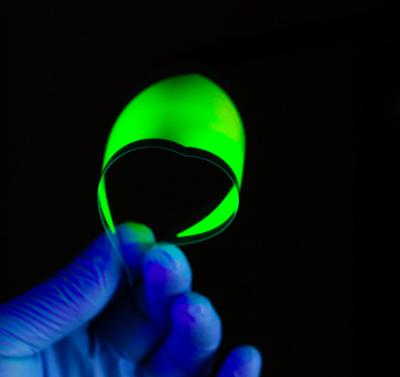Researchers develop bright, efficient and stable perovskite light-emitting diodes
Researchers from Korea's PEROLED, Seoul National University and Korea Basic Science Institute (KBSI), along with scientists from the UK's University of Cambridge, have reported an ultra-bright, efficient and stable perovskite LED made of core/shell perovskite nanocrystals with a size of approximately 10 nm, obtained using a simple in situ reaction of benzylphosphonic acid (BPA) additive with three-dimensional (3D) polycrystalline perovskite films, without separate synthesis processes.
During the reaction, large 3D crystals are split into nanocrystals and the BPA surrounds the nanocrystals, achieving strong carrier confinement. The BPA shell passivates the undercoordinated lead atoms by forming covalent bonds, and thereby greatly reduces the trap density while maintaining good charge-transport properties for the 3D perovskites.
